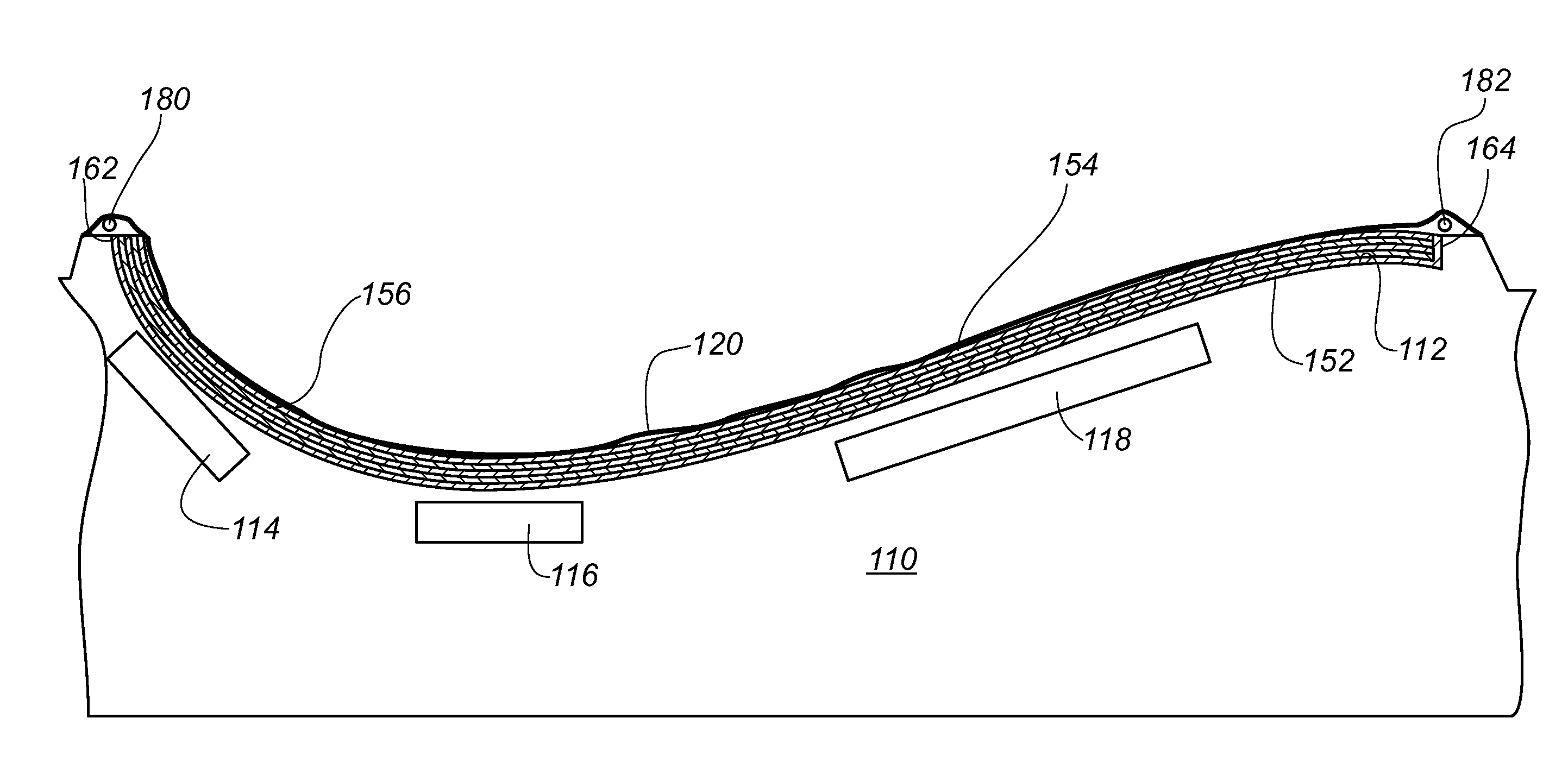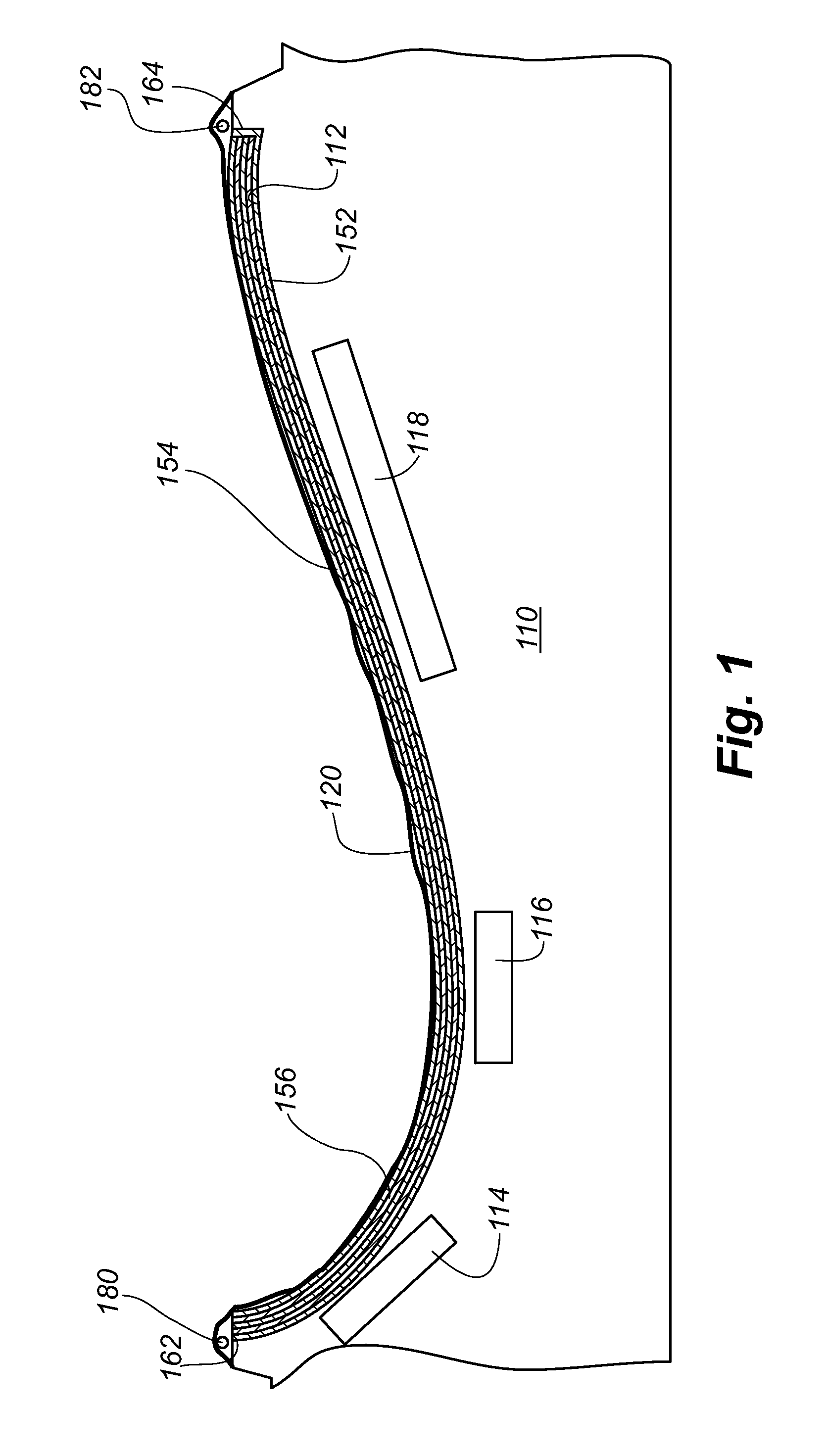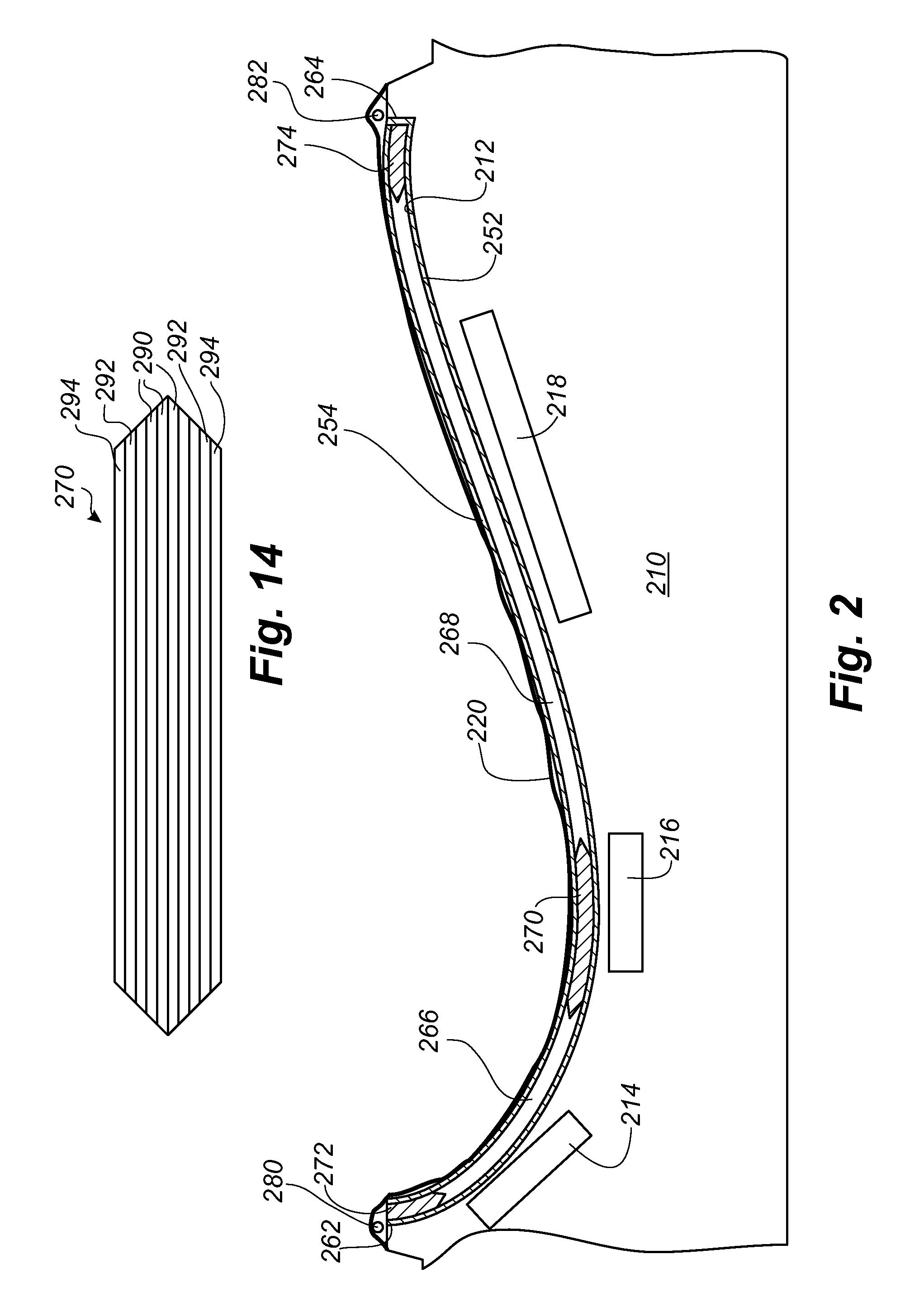Method of manufacturing a wind turbine blade comprising steel wire reinforced matrix material
- Summary
- Abstract
- Description
- Claims
- Application Information
AI Technical Summary
Benefits of technology
Problems solved by technology
Method used
Image
Examples
second embodiment
[0079]FIG. 2 shows a cross-sectional view through a first mould part 210 for use in a VARTM process. The mould part 210 comprises a mould cavity formed between a forming surface 212 and a vacuum bag 220, and in which a number of fibre layers, core parts and reinforcement sections are placed, these parts being included in a finished wind turbine blade shell part. The blade shell part comprises one or more lower fibre layers 252 impregnated with resin and optionally coated with a gelcoat, which define the exterior surface of the shell part, and one or more upper fibre layers 254 impregnated with resin, and which define the interior surface of the shell part. The upper fibre layer(s) 254 and lower fibre layer(s) 252 are separated by a fibre insertion or main laminate 270 comprising a plurality of fibre layers impregnated with resin, a first core part 266 and a second core part 268, as well as a first fibre reinforcement 274 at a trailing edge 264 of the shell part and a second fibre re...
first embodiment
[0082]Similar to the first embodiment, the first mould part 210 comprises magnet means in form of a number of electromagnets 214, 216, 218. The magnet means may be formed as a single electromagnet along the forming surface 212 or may comprise a plurality of electromagnets 214, 216, 218 as shown in the figure. The electromagnets can be used to retain or secure the fibre layers 252, 254, 256 against the forming surface 212 during the process of arranging the fibre layers 252, 254, 256 in the mould cavity and / or the evacuation process and / or the following impregnation process.
[0083]Particularly the process of impregnating the main laminate 270 and other fibre reinforcements is very time consuming. Therefore, the change from using reinforcement sections comprising mainly glass or carbon fibres to reinforcement sections comprising a majority, and preferably more than 80% by volume of steel wires, reduces the overall impregnation time substantially, and thereby the overall time for manufa...
third embodiment
[0084]FIG. 3 shows a cross-sectional view through a first mould part 310 for use in a VARTM process, and in which like numerals refer to similar parts shown in FIG. 1. Therefore, only the difference between the embodiments is described.
[0085]In this embodiment a number of prepregs 392 and / or pre-cured elements comprising metallic wires, preferably steel wires, are arranged between a number of outer fibre layers 354 and a number of inner fibre layers 352, optionally coated with a gelcoat, which define a part of the exterior surface of the blade shell part. The prepregs are pre-impregnated with resin, and the mould cavity is heated to a temperature, where the resin is allowed to reflow thus filling the mould cavity and the fibre material arranged therein. The heating eventually allows the resin to cure.
[0086]Again, the outer fibre layers 352 may be made of fibres having a diameter substantially smaller than that of the steel wires in the prepregs 392. The outer fibre layers 352, 354 m...
PUM
| Property | Measurement | Unit |
|---|---|---|
| Length | aaaaa | aaaaa |
| Length | aaaaa | aaaaa |
| Length | aaaaa | aaaaa |
Abstract
Description
Claims
Application Information
 Login to View More
Login to View More - R&D
- Intellectual Property
- Life Sciences
- Materials
- Tech Scout
- Unparalleled Data Quality
- Higher Quality Content
- 60% Fewer Hallucinations
Browse by: Latest US Patents, China's latest patents, Technical Efficacy Thesaurus, Application Domain, Technology Topic, Popular Technical Reports.
© 2025 PatSnap. All rights reserved.Legal|Privacy policy|Modern Slavery Act Transparency Statement|Sitemap|About US| Contact US: help@patsnap.com



